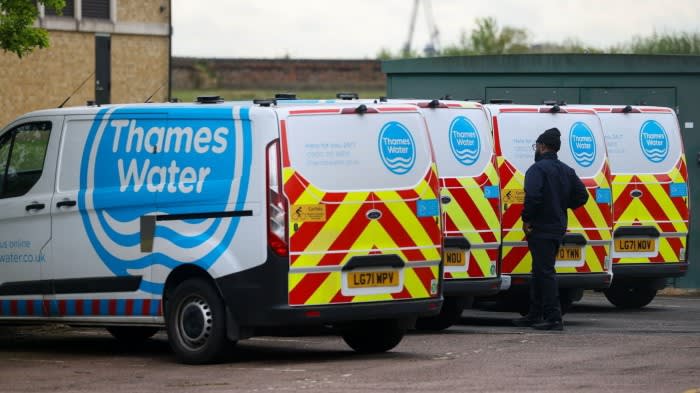Unlock the Editor’s Digest for free
Roula Khalaf, Editor of the FT, selects her favourite stories in this weekly newsletter.
Thames Water’s battle for survival intensified on Friday when debtholders fell out over a proposed £1.5bn emergency loan and restructuring plan that would help the UK’s largest privatised water utility stave off financial collapse by Christmas.
The crisis-struck company, which provides water and sewerage services to about 16mn households in south-east England, is struggling under a £19bn debt load and has faced lukewarm demand for an attempt to raise as much as £3bn in equity from infrastructure investors.
On Friday, a group of creditors wrote to Thames Water complaining that they had been cut out of negotiations around a new loan to prevent a cash crunch at the utility, which has warned that it risks running out of readily available liquidity shortly after Christmas.
These creditors, which hold some of the lower-ranking bonds, have hired heavyweight litigation law firm Quinn Emanuel to represent their interests, after a large bondholder group ejected them on Thursday.
“Our clients are concerned that [Thames Water] and its advisors appear to be close to launching a restructuring plan without having consulted an important creditor constituency,” Quinn Emanuel wrote to Thames Water’s legal advisers on Friday evening.
Thames Water declined to comment.
The dispute raises the stakes in the company’s bid to avoid financial collapse, given the sheer numbers of creditors that need to reach agreement on any proposal. It risks being renationalised under the government’s special administration regime if it cannot agree a restructuring with debtholders.
The creditors behind Friday’s letter include hedge funds, banks and insurers, according to people familiar with the matter, and represent a significant portion of Thames Water’s £1.4bn of class B debt. They stand to take heavy losses or have their bonds wiped out should the company be renationalised. The class B bonds were trading at less than 20p in the pound on Friday, reflecting their low recovery expectations.
Holders of these lower-ranking bonds were ejected earlier this week from Thames Water’s largest creditor group of more than 100 institutions, which owns more than £10bn in bonds.
Some of this group’s remaining class A debt holders have been negotiating a restructuring plan and emergency loan of at least £1.5bn that would rank ahead of all existing debt, according to people familiar with discussions.
This group’s advisers warned the class B holders on Thursday of a “significant risk of a conflict of interest” emerging between them and higher-ranking class A holders. Thames Water has about £16bn of class A debt outstanding, and this would rank ahead of class B holdings in a special administration or insolvency.
The largest holders within the class A bondholder group have been negotiating with Thames Water around a “new money” loan with an aim of formally proposing terms in the coming weeks, according to people close to the discussions.
“It is clear that negotiations with a single creditor group cannot lead to the objectively best available deal for [Thames Water],” Quinn Emanuel’s lawyers wrote on Friday. “It is also critical that any new money contribution is not structured in such a way that limits the runway for an equity-raising process.”
The letter also claimed that the class B holders would be able to “contribute significant new money” to Thames Water and could potentially “provide funding on competitive and potentially attractive terms”.


